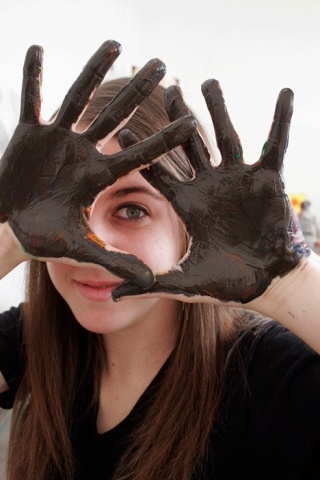What is old is “nouveau” again for some local budding artists.
Art Nouveau describes a movement of art that happened between 1890 and 1914 when a new decorative style of art and architecture developed in Europe and North America.
The studio drawing and design students of South Whidbey High School were inspired by this particular movement of art and created a show of two-dimensional work that reflects that inspiration.
Their “Studio Nouveau” exhibit represents the development of each student’s individual style throughout the past year in all mediums, though the work in the exhibit is predominantly painting, drawing and photography.
“Studio Nouveau” opens at the Firehouse Gallery in Langley from noon to 6 p.m. on Saturday, June 5 and from noon to 4 p.m. Sunday, June 6. An artists’ reception is from 4 to 6 p.m. Saturday.
“This group is very focused and genuinely interested in pushing themselves as artists,” instructor Don Wodjenski said.
“Many undertook the exploration of mediums new to them and have been working toward initial mastery. All should be applauded for their efforts.”
The students’ attitude is appropriate, as exploration was the name of the game for artists and designers of the Art Nouveau period.
Some artists, architects and designers of that new modern generation responded to the full-steam-ahead industrial revolution by creating new artistic styles, images and ideas that reflected the dawn of technology and the subsequent change in lifestyles.
Others however, rebelled against the mass-produced goods made without craft by machines, and aimed to elevate the decorative arts to the level of fine art by applying the highest standards of craftsmanship and design to everyday objects.
During this extraordinary time, the idea of “urban living” was established. Old customs, habits and artistic styles combined with new ones, creating a wide range of contrasting, but highly stylized images and ideas.
Art Nouveau designers also believed that all the arts should work in harmony to create “total works of art,” or gesamtkunstwerks, where buildings, furniture, textiles, clothes and jewelry all conformed to the principles of Art Nouveau.
An important aspect of the concept was the presentation of the works of art, and the necessary ambience of the public place in which the viewers found themselves.
The students of the studio drawing and design class may not have been able to reach a complete expression of gesamtkunstwerk, but thanks to the city of Langley, the old firehouse on Second Street has been generously donated for the exhibit along with all its historic charm.
Also charming is the poster advertising “Studio Nouveau” created by student Lena Nichols.
The poster shows a marked influence of students’ study of Art Nouveau and is reflective of the posters of that period by such famous artists as Henri Toulouse-Lautrec, Alphonse Mucha and Koloman Moser, whose posters may be familiar to people as many of them were copiously used for commercial advertisements well into the
20th century.
“Studio Nouveau” is new art by young artists on the verge of their own new wave. Go see it.



